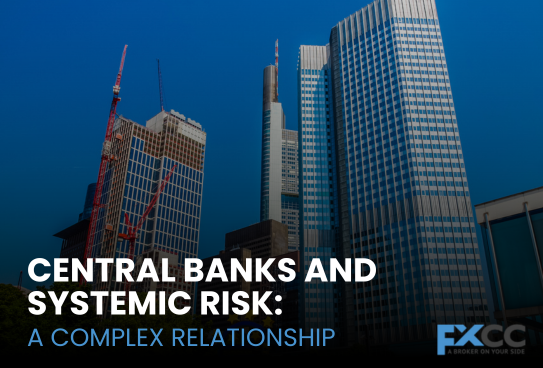Systemic risk, the potential for a widespread collapse of the financial system, is a constant threat to the global economy. Central banks, as the guardians of financial stability, play a critical role in mitigating this risk. However, their relationship with systemic risk is complex and multifaceted, involving both proactive measures and reactive responses.
The Nature of Systemic Risk
Systemic risk arises from interconnectedness and interdependence within the financial system. When one institution or market experiences a significant shock, the effects can ripple through the entire system, leading to a domino effect of failures. This can have devastating consequences for the economy, including job losses, economic recession, and a loss of confidence in the financial system.

Central Banks as Providers of Liquidity
One of the core functions of central banks is to act as providers of liquidity, ensuring that financial institutions have access to the necessary funds to meet their obligations. This role is particularly critical during times of stress, when market confidence may be low and liquidity can become scarce. By offering loans to struggling financial institutions, central banks can help to prevent contagion and contain the spread of systemic risk.
Financial Stability Surveillance
Central banks also play a crucial role in monitoring the financial system for signs of stress. By analyzing data on credit growth, asset prices, and other indicators, central banks can identify potential vulnerabilities and take preemptive measures to mitigate risk. This early warning system can help to prevent financial crises before they occur.
The Limitations of Central Bank Tools
Despite their best efforts, central banks face significant challenges in managing systemic risk. One of the key challenges is the complexity of the modern financial system, which is increasingly interconnected and globalized. This makes it difficult for central banks to identify and address all potential sources of risk.
Moreover, the tools available to central banks may not be sufficient to address all types of systemic risk. For example, traditional monetary policy tools may be less effective in addressing systemic risks that are rooted in financial innovation or global imbalances. This necessitates the development of new regulatory and supervisory frameworks.
The Future of Central Banking and Systemic Risk
As the financial landscape continues to evolve, central banks will need to adapt their strategies to address new and emerging risks. This may involve developing new regulatory tools, strengthening international cooperation, and investing in advanced analytical capabilities.
In addition, central banks may need to consider the potential role of technology in managing systemic risk. For example, the use of big data and artificial intelligence could help central banks to identify early warning signs of financial instability more effectively.
In conclusion, the relationship between central banks and systemic risk is complex and multifaceted. While central banks play a critical role in mitigating this risk, they face significant challenges in a rapidly changing financial landscape. By understanding the nature of systemic risk and the tools available to central banks, we can better appreciate the importance of their role in safeguarding financial stability.

FAQs
What is systemic risk?
Systemic risk refers to the potential for a widespread collapse of the financial system. It can occur when a shock to one institution or market leads to a domino effect of failures.
What is the role of central banks in managing systemic risk?
Central banks play a crucial role in mitigating systemic risk by acting as lenders of last resort, implementing macroprudential regulation, and monitoring the financial system for signs of stress.
How do central banks act as lenders of last resort?
By providing liquidity to the financial system during times of stress, central banks can help to prevent contagion and contain the spread of systemic risk.
What are the limitations of central banks as lenders of last resort? Central banks may face limitations in terms of the amount of liquidity they can provide and the risk of moral hazard.


